 With all the project management tools available, you’d think everyone would be meticulously organized, productivity would be at an all-time high, and communication would be seamless. However, a recent survey by Quickbase suggests that workers are finding it challenging to be meaningfully productive. They’re stressed out and overwhelmed. They’re tired of chasing down information that only exists in some silo among a squadron of stakeholders.
With all the project management tools available, you’d think everyone would be meticulously organized, productivity would be at an all-time high, and communication would be seamless. However, a recent survey by Quickbase suggests that workers are finding it challenging to be meaningfully productive. They’re stressed out and overwhelmed. They’re tired of chasing down information that only exists in some silo among a squadron of stakeholders.
All of this work, a special kind of work called “gray work,” doesn’t actually push a project forward. All these hours of hodgepodging cross-platform solutions simply keep a project from slipping backward. To keep your team moving forward, let’s talk about what precisely gray work is, the current landscape of project management, and how to set up a centralized platform that boosts productivity.
 What is Gray Work?
What is Gray Work?
Gray Work is tedious, unfulfilling, time-consuming work that comes from searching for data and bridging the informational gap between project management tools. As Quickbase Director Robert Salaj mentioned on the Empower 2024 panel, “[Gray work] is the time that you spend chasing information.” Industries with complex projects, such as construction and manufacturing, are at high risk for gray work, which leads to overwhelmed workers, wasted time, and difficulty making decisions efficiently and effectively.
More Tools. More Challenges.
New project management tools seem to emerge every day, all geared toward making us more efficient, more productive, and more connected. According to a recent Gartner study, a worker uses an average of 11 software applications a day. Consider that number across multiple vendors, contractors, and stakeholders, and the cracks in our current approach reveal themselves.
However, company decision-makers add more software to their digital toolboxes with the best intentions of helping their teams work smarter, not harder. Yet, with each tool added, it often feels like we’re working dumber, and nothing is getting easier.
Case in point: QuickBase survey reported that 54% of workers say it is harder than ever to be productive and create meaningful value in their daily work. Further, 90% of them feel overwhelmed by the number of software solutions they use daily—the very solutions that are supposed to increase productivity.
But the problem isn’t with the tools or technology. It’s how they’re connected. Or rather, not connected.
This disconnect causes data silos. As more data becomes siloed, forming a holistic view of the project becomes more challenging. In fact, 69% of respondents to Quickbase’s survey said using multiple project management software solutions prohibits them from easily sharing project-related information. The result is a near-inability to work effectively across core project teams
Siloed information is a productivity killer. Efficiency evaporates, project phases are improperly prioritized, and decision-making gets dragged down.
Often, in desperation, some exhausted project manager hacks together an Excel spreadsheet for at least some Frankensteinian picture of the full project and to have a repository of all the moving pieces.
What’s becoming increasingly clear is this: Companies have taken the right step in embracing technology. But now they need to find a tool that keeps everyone and everything connected.
 Work with Meaning
Work with Meaning
Quickbase’s survey reveals that 58% of respondents spend less than 20 hours per week on meaningful work—initiatives that truly drive results. Perhaps it’s because 45% of them are spending 11+ hours per week doing nothing but chasing information from different people across multiple systems.
Gray work has a knack for finding its way into everyone’s job. It wastes valuable time under the guise of spreadsheets, emails, PowerPoint, and snail-mail documents. Quickbase CEO Ed Jennings calls this “productivity theater.” Gray work obscures the obvious fact that being busy and productive are not the same.
Right Person. Right Place. Right Time.
Construction teams need intelligent data. In April’s newsletter, I discussed how artificial intelligence (AI) could help us find, organize, and leverage it. But AI’s benefits in the construction industry don’t end there.
With the right tools, every piece of essential information is available to the right person, no matter where they are or whenever they need it. Picture this:
A Superintendent is running a project experiencing extended weather delays that have a potential schedule impact. The Superintendent has decisions and communication that must be completed to stay compliant and direct the project. This requires understanding the contractual requirements for alerting project stakeholders and the current project progress. In our current state, this would require accessing multiple systems and preparing separate communications that take valuable time away from other higher-value tasks, such as mobilizing trades unaffected by weather or coordinating material changes from the weather impacts.
With a connected system driven by intelligent design, the contract has been consumed in another platform like Document Crunch. Instead of the Superintendent attempting to access Document Crunch the connected design allows the Superintendent to stay in their Project Management system, Procore, and have the necessary decisions presented to them. When the Superintendent makes the decision, they are presented with prepopulated communication templates based on previous communications. The Superintendent can proofread, make minor changes, and deliver the communications efficiently without leaving their preferred platform.
It is not about single data sources but connected data sources–and yes, fewer of them.
Right now, too many disconnected tools prevent companies from leveraging their data. AI is only as good as the data you feed it. So, for AI to reach its full potential in the industry, we need to make a few significant changes to improve productivity and remove gray work.
1. Simplify Your Toolbox
We’re all using too many solutions that don’t play nicely with each other. Ensure your teams have a core digital toolset they use. Streamlining your tech stack is essential to follow through with the second step of minimizing gray work.
2. Centralize Your Data
By shifting from a suite of point solutions to connected data platforms, your data will become valuable. With all of your data centralized, AI can finally start showcasing its potential for your team. From design authorization and document management to equipment maintenance and safety compliance monitoring, you can streamline and automate a myriad of low-level tasks that eat up time and cause stress.
3. Work Dynamically
Minimizing gray work boils down to keeping everything connected–your people, processes, and projects. Stakeholders need to take advantage of platforms with strong mobile capabilities. It doesn’t matter if your team is in the office or on the job site; workers need to be able to record information in real-time, where work is happening, while it is happening.
4. Keep Your Data in Check
The automation that AI brings about is only as good as the data you are storing. So, be sure you have a strong data governance policy and process. Not only will this improve data security and compliance, but it’ll promote better connectivity and more successful business outcomes.
Find Solutions that Work for You
Tools like Quickbase’s AI-powered Smart Builder, Document Crunch, Togal, Snaptrude, and many more are helping to minimize the number of tedious tasks on everyone’s plate and free people up to do genuinely productive work.
I’m confident with the right solutions, we can all contribute to more meaningful work and build better, more sustainable projects. If you want to learn more about streamlining your business operations and the latest technology, listen and subscribe to the Contech Crew podcast.
